Rightly ranking among the best things to do in town, the Bergen Aquarium offers an immersive experience generously. Aquariums are often misunderstood as places for kids, but I can assure you that’s not the case. The so-called Akvariet i Bergen will expose you to the sealife of our planet, and you’ll see up close a wide variety of species living in the oceans. As a maritime country, Norway hosts a unique ecosystem, and strolling through the Aquarium is unforgettable.
I traveled to Bergen at the end of a long winter, and the city was covered in snow. It was probably the coldest day of my journey when I decided to visit the Aquarium. I didn’t know what to expect, but I always wanted to shoot some fish portraits. Moreover, I had my small Ricoh GR ii with me, and I was unsure if the camera could take some decent photos. But I thought of trying anyway.
The Bergen Aquarium is located in a peaceful spot on the edge of the city center. You enter the museum through its shop, and there you can buy a ticket. After a short walk outside, where you can see penguins and sea lions, it’s time to enter the main hall. And that’s where the fish tanks are.
*Some links are affiliate links. It means that if you buy something, I might earn a small commission at no additional cost to you.
Fish portraits in the Bergen Aquarium

It is mesmerizing to observe sealife. The slow movement of the fish, their sudden pauses, and their flow through the limited space of a tank give you a unique perspective of the ecosystem. Aquariums, like zoos, might feel like sad places to some. And indeed, from a certain perspective, they are. However, such places make us aware of the planet’s life, and seeing species up close contributes to our empathy.
Now, in the following lines, you will see the fish portraits I shot while visiting the Bergen Aquarium. Wherever possible, I’ll try to write down a few pieces of info about each fish. However, I’m not an expert on sea life, and information might be missing. If that’s the case, feel free to leave a comment at the bottom of this post with extra info, and I’ll make sure to include it in the text.
Let’s begin.
Zebra Lionfish
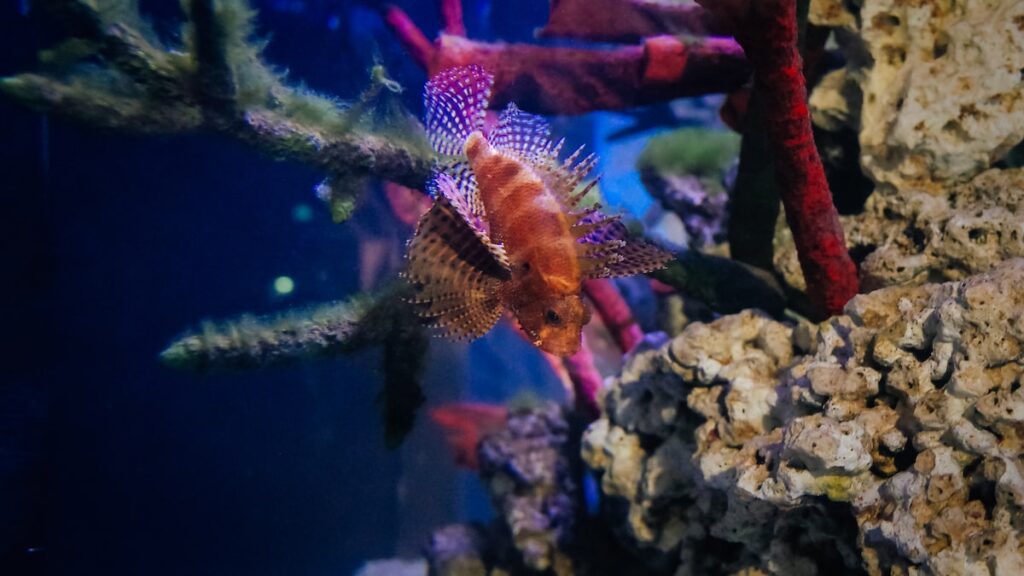
In one of the first tanks, you’ll see the zebra lionfish. The so-called Dendrochirus zebra belongs to the family of Scorpaenidae and, at first glance, doesn’t impress with its size. They are never longer than 25 cm in full growth, and I believe the one I photographed in Bergen is much smaller.
However, taking a closer look at it, you can see that the lionfish has some impressive stripes on its body. This is because its fin spines are poisonous, and that’s why it was kept alone in the tank.
Taisho Sanshoku (Sanke Koi)
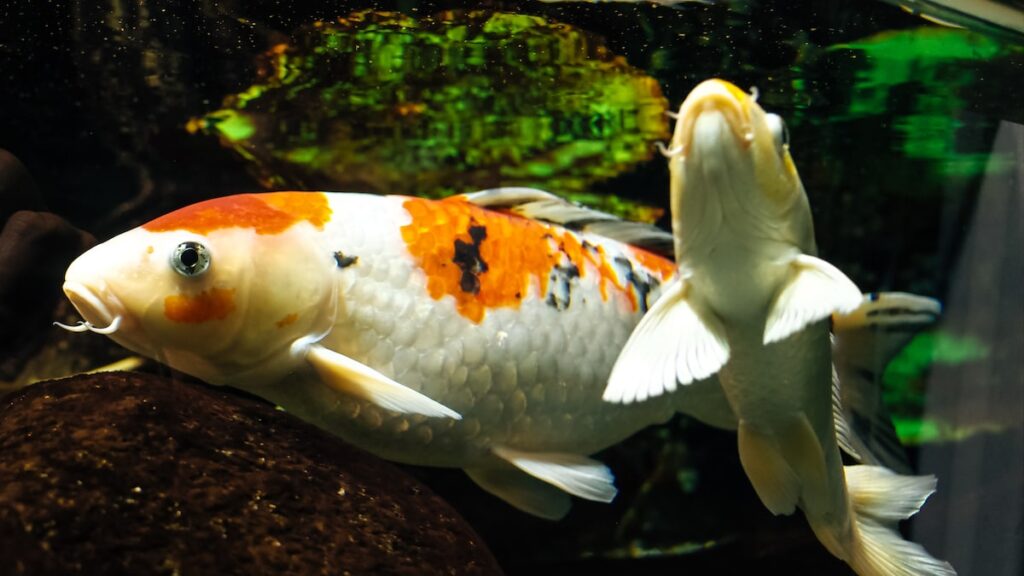
The colors of the Taisho Sanshoku were truly beautiful. Its body has red, white, and black patterns, and it’s fantastic seeing it move. The so-called Sanke was first observed in the late 19th century, and it was probably a genetic mutation that helped them appear. As for its name, it probably derives from the emperor of Japan at the time the species was first bred, named Taisho.
In general, Koi fish colors always fascinate people worldwide, which is why they make great pets.
Unknown fish
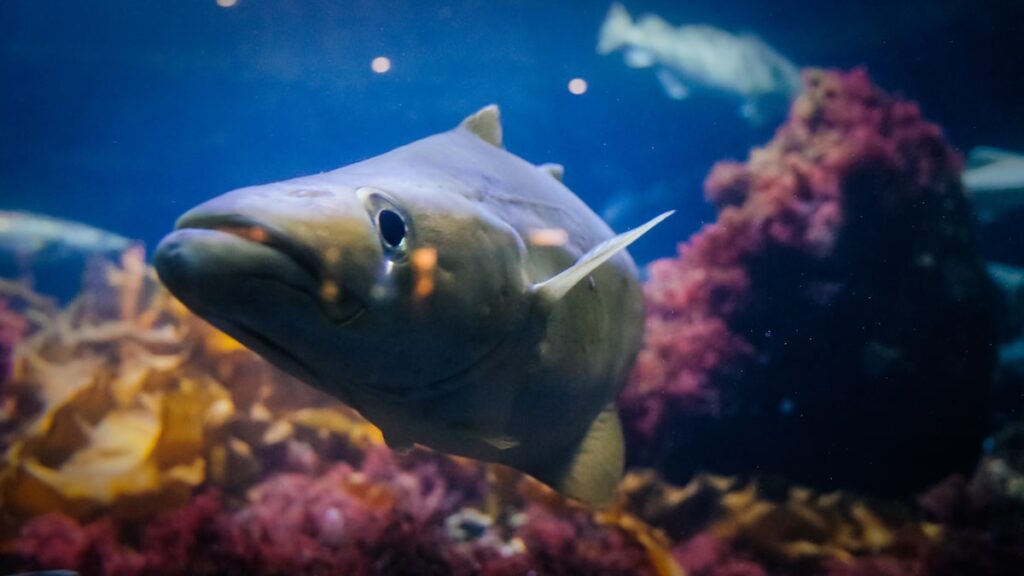
Unfortunately, I don’t have more info about this one. I can’t remember its name, and I still can’t figure out the family it belongs to. So, if you have an idea, please share it with me.
Atlantic Wolffish
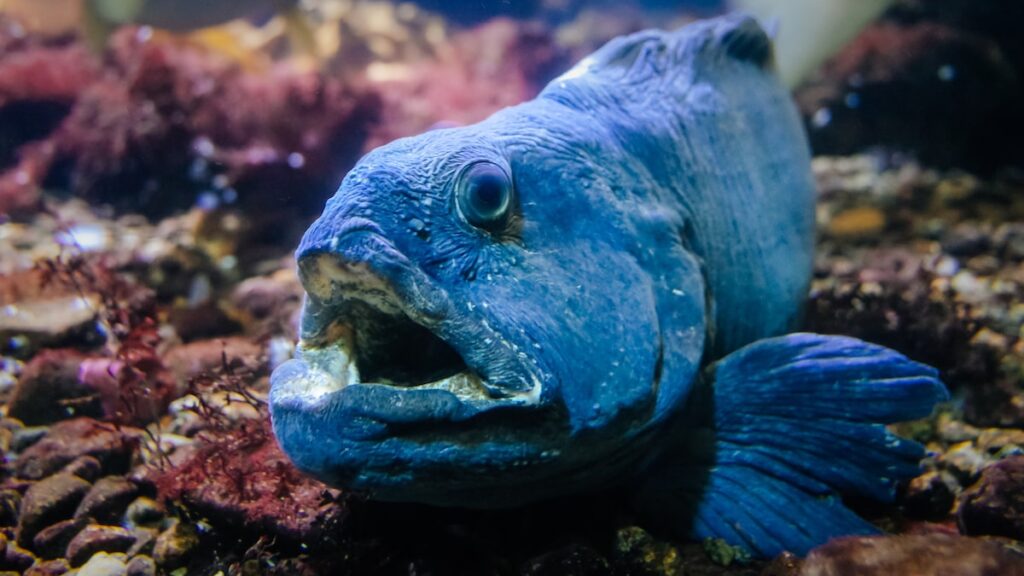
That’s one of the weirdest fish I have seen in the Aquarium of Bergen, and luckily enough, it came pretty close to me. The Atlantic Wolffish (Anarhichas lupus) can grow up to 1,5 meters long, and to some, it might look scary. It’s also known by other names, like seawolf or even devil fish.
Native to the North Atlantic Ocean, the Wolffish keeps its blood circulating by producing some sort of natural antifreeze. It stood in front of me for a couple of seconds, and it was impressive the way it breathed, seemingly heavily. I believe its original color is less blue than in the image, but I think the tank’s light contributed to its bluish tint. However, since I was unsure about the color, I decided not to edit the white balance.
Bleke – A unique salmon

Bleke is a unique kind of salmon known to live in the Byglandsfjorden in Setedalen. That’s a landlocked North-Atlantic salmon that spends its entire life in freshwater. The Bleke is an elegant salmon with a unique spotted pattern on its body, and according to experts, it has inhabited the Byglandsfjorden for more than 9,000 years.
Thornback Ray

That’s hands down the most impressive creature I have seen in the Bergen Aquarium. As you can see, the Thornback Ray seems to have human characteristics, and at some point, I even thought it was a ghost fish. In addition, it was tough to photograph it due to its constant movement. It didn’t move fast, but it kept flowing in a truly mesmerizing way.
Thornback Ray has a flattened body, and its shape might remind you of a kite. Its back is covered with thorny spines, and it’s, unfortunately, a nearly threatened species. Stunning creature.
Kaluga
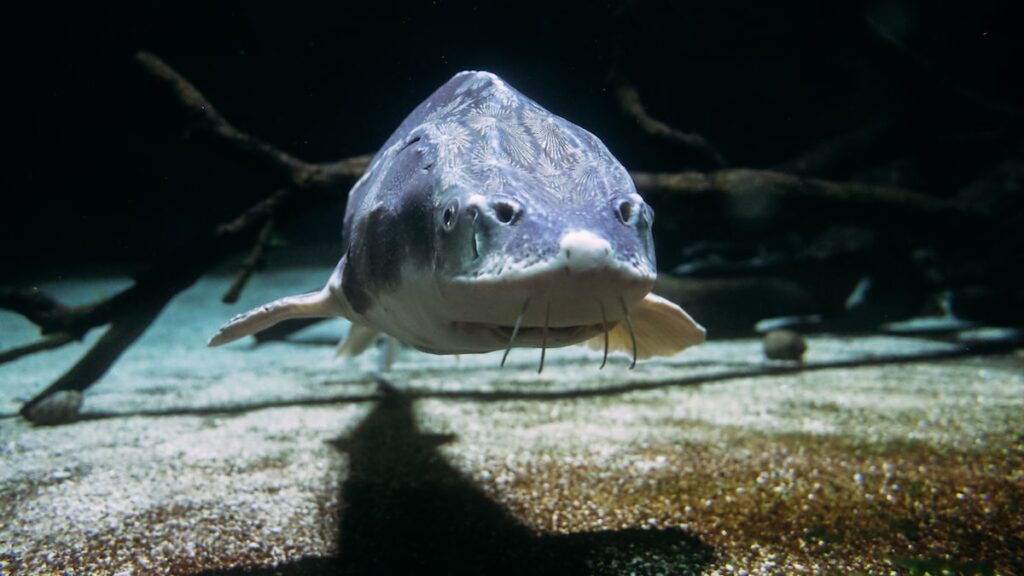
While I’m not 100% sure, I believe this is a Kaluga. The Kaluga is a predatory sturgeon, one of this family’s biggest fish. Unfortunately, the fish is near extinction due to aggressive hunting. However, I might need your help on this one because it can very well be another member of the sturgeon family.
Flatfish
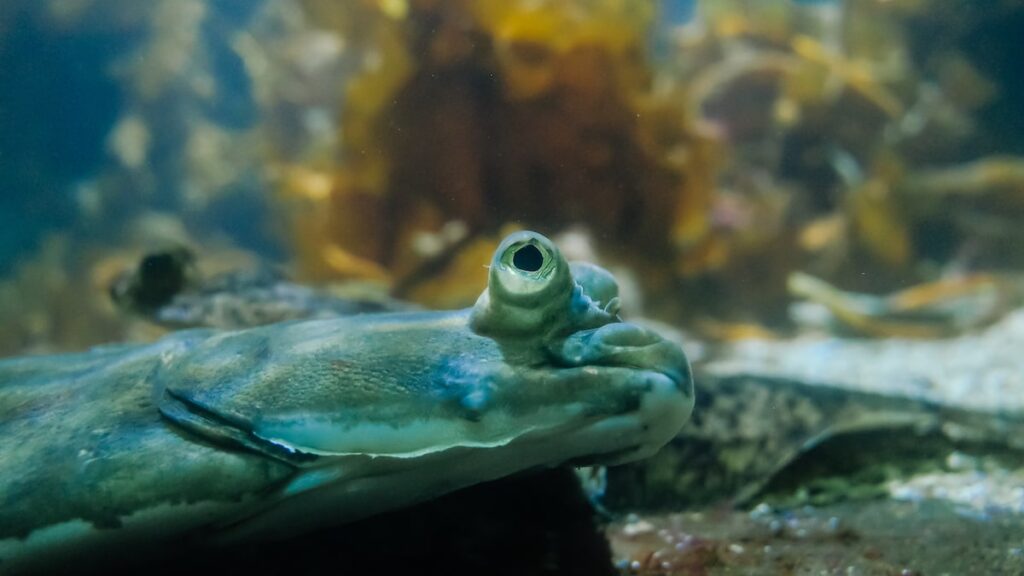
There are 16 different families of flatfish, with more than 800 species belonging to them. One of the main flatfish characteristics is that their eyes are often on one side of the head. I tried to get as close as possible to shoot this flatfish photo, and seeing its eye up close was impressive.
Common Eel

The common eel (Anguilla anguilla) can actually feel the earth’s magnetic field. It is this feeling that helps it navigate through its journeys around the oceans, making it one of the most intuitive species. The eels that grow in freshwater become female, while the ones growing in brackish water become male. Moreover, they can move on land from one river to the other.
And here’s one more common eel fun fact: although their blood is poisonous, the poison disappears when the eel is cooked.
Moon Jellyfish
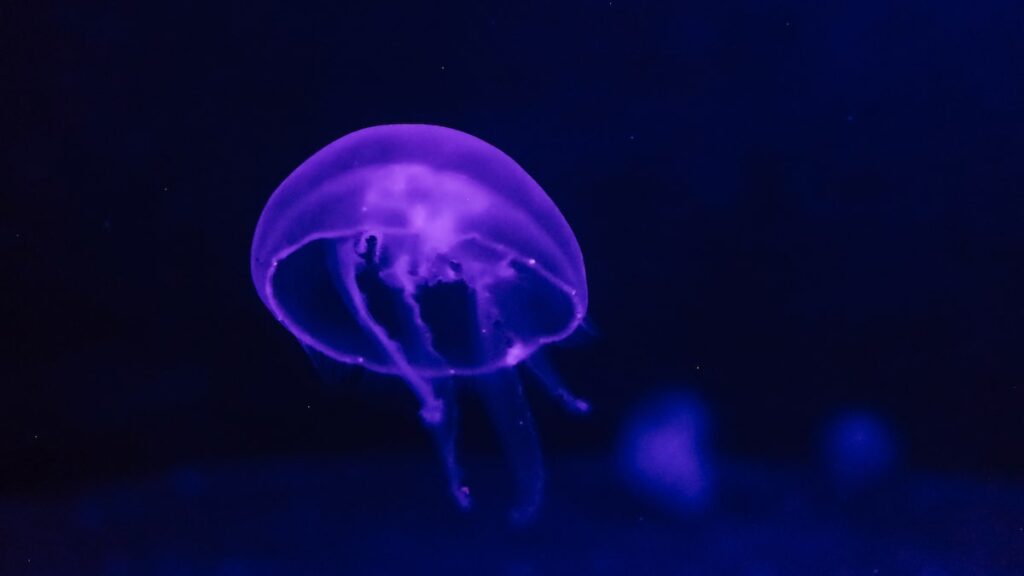
Moon Jellyfish (Aurelia Aurita) are plankton: they just drift along with the ocean currents. Jellies don’t have a brain or heart and can’t swim; however, oddly enough, they can decide the depth they want to flow. They clone themselves just before they die.
Seeing the Moon Jellyfish flowing on its purple glow is definitely something to remember. Their movement is smooth, and it was tough to take a decent photo due to their dark environment. But I hope you can get an idea.
Tanganyika Cichlids
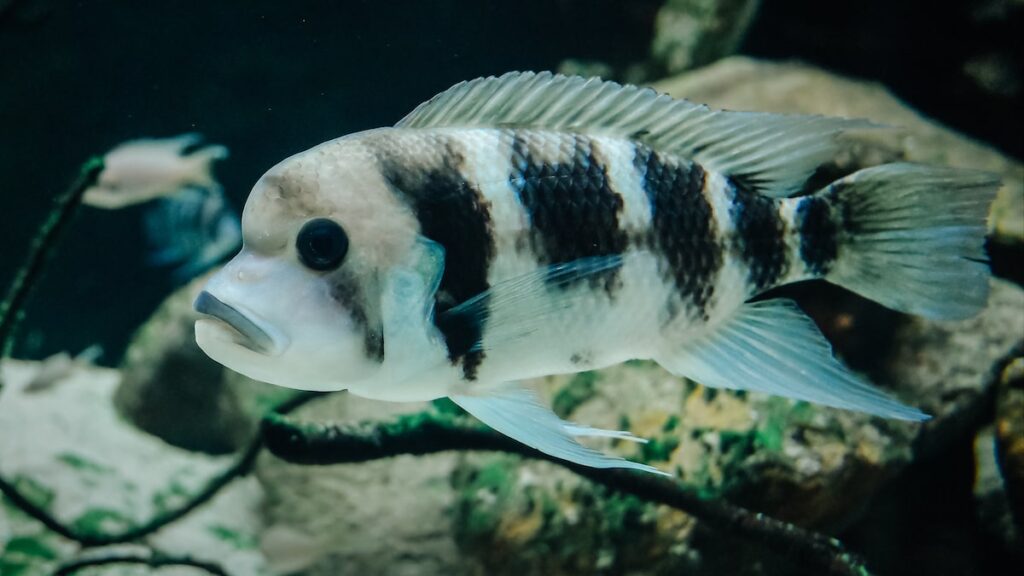
Lake Tanganyika is the largest lake in East African Rift. More than 250 species of cichlids live in the lake; however, the Tanganyika cichlids tend to be less colorful than the Malawi ones. Despite their somewhat melancholic looks (or is it because of that?), the Tanganyika cichlids have highly developed social behavior, and they are popular subjects for evolutionary biologists, geneticists, and behavioral researchers.
Pennant Coralfish

Although it’s hard to tell the difference, I believe what you see here is a pennant coralfish (Heniochus acuminatus) and not a schooling bannerfish. The pennant coralfish belongs to the Chaetodontidae, which is native to the Indo-Pacific area. Small in size and fast in movement, the fish is never longer than 25 cm -in fact, it’s usually much smaller. A notable feature is that a black band links its eyes.
And that’s it with the fish portraits from the Bergen Aquarium.
Bergen Aquarium photography settings
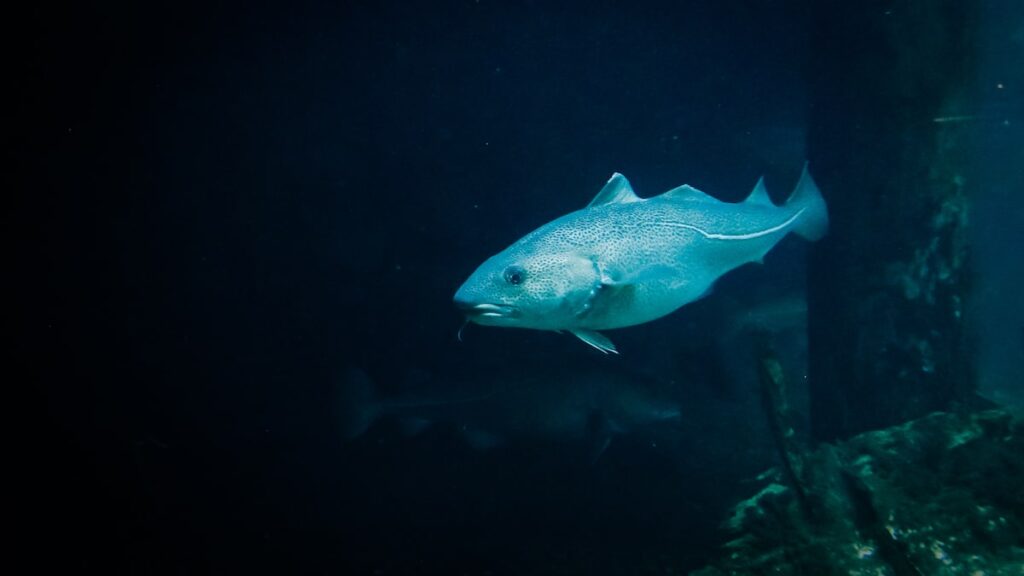
As promised, here’s a short section regarding the camera settings I used for this photo report from Aquarium Bergen.
I used my compact Ricoh GR ii to shoot these photos; therefore, there were certain limitations. The Aquarium’s interior was dark, so I needed to raise my ISO to 1600. Beyond ISO 1600, the noise is intense, so I decided not to exceed it. However, if your camera can handle higher ISOs, go for it.
In addition, you need to have the wider aperture your camera can handle. In Ricoh’s case, the widest aperture is f/2,8, and that’s what I used in the photos you saw.
Finally, depending on the tank’s light, I used a variety of shutter speeds. For example, the jellyfish is shot with 1/80, but the Wolffish is with 1/15. You’ll have to decide based on the available light, but ideally, it would be better to aim for 1/25 and faster.
And here’s an extra tip: nature photography is very demanding. Work your scenes and spend enough time on the spot. You’ll probably have to take several images with different settings until you have one that really works.
Practical info about the Bergen Aquarium
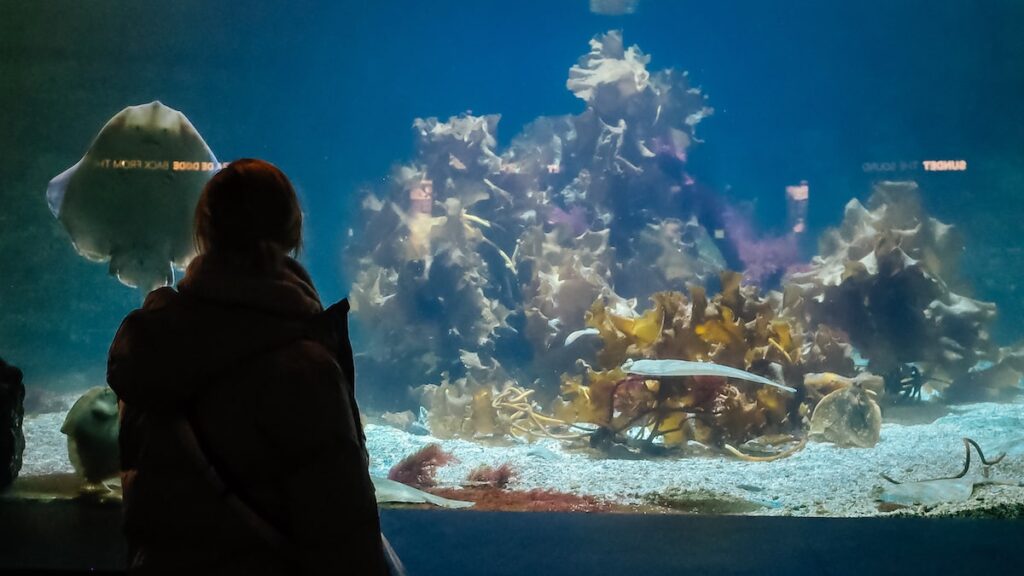
In this section of the article, you will find practical info about your visit to the Bergen Aquarium. While visiting the Aquarium is one the best things to do in Bergen for families, I encourage you to visit it even if you are a solo adult traveler. It’s an enjoyable and educational experience, and you’ll definitely have some photos to remember the species you came across (hint: there are also crocodiles).
So, here’s what you need to know before visiting the Bergen Akvariet.
Opening hours
The Bergen Aquarium is open daily from 10 am to 6 pm.
Tickets
For adults (16 and above), the tickets cost 345 Krones (~30 euros/~32 $). Children (3 to 15 years old) pay 220 Krones; kids younger than 3 years old enter for free. There’s also a family ticket (2 adults and 2 children, or 1 adult and 3 children) that costs 930 Krones. Finally, students with valid ID cards and senior citizens above 67 will pay 250 Krones.
Bergen Aquarium Location
The Bergen Aquarium is at Nordnesbakken 4, 5005 Bergen at the Nordnes Park. You can see the Akvariet location on Google Maps here.
Alternatively, if you have a pass for the city’s hop-on-hop-off bus, you can disembark at stop No. 5, which is straight in front of the Aquarium.
For any other information, you can visit the official Akvariet website.
Aquarium Bergen: conclusion
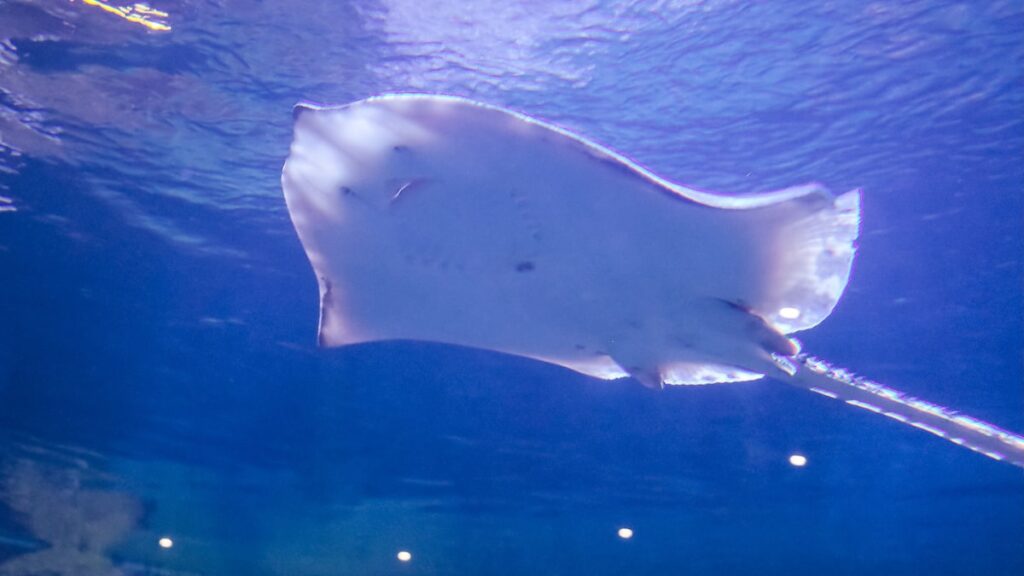
The Bergen Aquarium is a fantastic place to spend some time when you’re in the city. While many people will think of stopping by when the weather is bad -definitely one of the best things to do in Bergen when it rains– the truth is that it deserves a visit anyway. The beauty of sea life, accompanied by various info about the Bergen traditions, will offer you a unique perspective into the history and development of Norway.
No matter your connection with nature, it will be redefined after a visit to the Bergen Aquarium. Overall, a fantastic experience.
More about Bergen: Bergen-Mostraumen Fjord cruise, Bergen Maritime Museum, 3 days in Bergen itinerary
Pin it for later
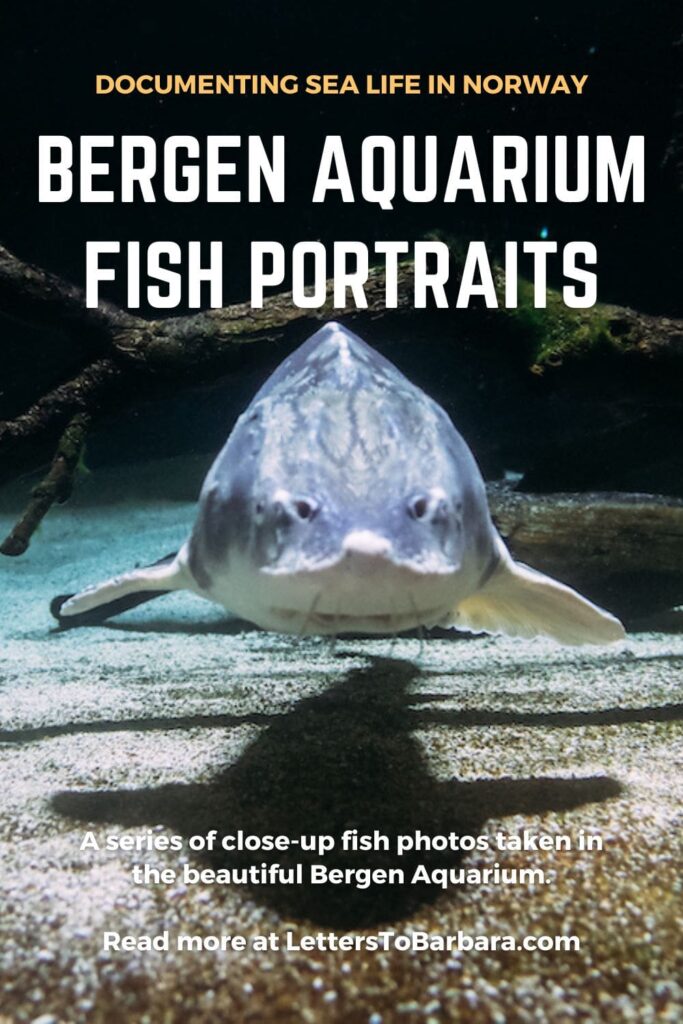
Sharing is caring. Share the Bergen Aquarium: fish portraits with your friends.
Last Updated on May 27, 2023 by George Pavlopoulos


